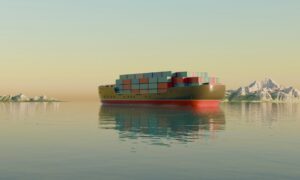Tools for Shipping Containers / What is Needed for Loading and Unloading Containers
Containers now play a very important role in international trade and transportation, so the loading and unloading of containers is a problem that needs attention. Once the containers are loaded or unloaded, they can be shipped to their final destination. The method of loading and unloading containers directly affects the efficiency of the transportation process. Using the proper equipment helps ensure safe and secure handling of containers. As you can see, a wide variety of machines are used in the process of loading and unloading containers. Each device has its specific purpose and function. To ensure that processes run smoothly and efficiently, all machines must be used in the correct order and in the correct manner.
As tools for transporting containers, we generally use skeleton semi trailers and flat-bed semi-trailers.
Equipment for loading and unloading containers
Containers are large standardized shipping containers used to store and transport materials and products. These containers are designed and manufactured to be robust and able to withstand the rigors of international shipping.
There are many different containers, each designed for a specific purpose. The most common container type is the 20-foot (6.1-meter) intermodal container. This container is used for most international shipments. There are a number of different methods used to load and unload containers. The most common tools include:
- container crane
- forklift
- container straddle carrier
- Reachstacker
- Roll-on-roll-off (RORO)
- Hoisting / Hoisting
- front loader
- rear loader
Tips And Tricks
There are usually three methods for on-site packing of container goods, that is, all packing by manpower, moving into the box with a forklift truck (forklift), and then stacking by manpower and all packing by machinery, such as pallets (pallets). ) The goods are stacked in the box with a forklift truck.
We’ve put together seven tips:
1) In any case, when the goods are loaded into the container, the weight of the goods in the box cannot exceed the MAX loading capacity of the container, that is, the total amount of the container minus the self-weight of the container. Under normal circumstances, the total weight and dead weight will be marked on the door of the container.
2) The unit density of each container is fixed, so when loading the same kind of goods in the box, as long as you know the density of the goods, you can determine whether it is heavy or light. If the density of the cargo is greater than the unit density of the box, it is heavy cargo, otherwise it is light cargo. Timely and clear distinction between these two different situations is important for efficient box packing.
3) When loading, the load on the bottom of the box must be balanced, and it is especially strictly forbidden to have the center of gravity of the load at one end.
4) Avoid concentrated loads. For example, when loading heavy goods such as machinery and equipment, the bottom of the box should be covered with padding materials such as wood boards to spread the load as much as possible. The safe load per unit area of the bottom of a standard container is roughly: 1330×9.8N/m2 for a 20-foot container, and 980×9.8N/m2 for a 40-foot container.
5) When using manual loading, pay attention to whether there are loading and unloading instructions on the package such as “not upside down”, “flat”, “vertical”, etc. Be sure to use the loading tools correctly, and it is forbidden to use hand hooks for bundled goods. The goods in the box should be loaded neatly and tightly. For goods that are easy to loosely bundle and pack fragile goods, use pads or insert plywood between the goods to prevent the goods from moving in the box.
6) When loading pallet cargo, it is necessary to accurately grasp the internal dimensions of the container and the external dimensions of the cargo packaging, so as to calculate the number of loaded pieces, so as to minimize the abandonment and load more cargo.
7) When packing with a forklift truck, it will be limited by the free lifting height of the machine and the height of the mast. Therefore, when conditions permit, the forklift can load two layers at a time, but there must be a certain gap between the upper and lower sides. If the conditions do not allow loading two floors at a time, when loading the second floor, considering the free lifting height of the forklift truck and the possible lifting height of the mast of the forklift truck, the lifting height of the mast should be the first floor. Cargo height minus free lifting height, so that the second layer of goods can be loaded on the top of the third layer of goods.
With the development of container transportation, goods of different types, properties and packages have entered the field of container transportation. In order to ensure the safety of freight quality, it is very important to do a good job of stowage of the goods in the box. Many cargo damage accidents occur because of packing Inappropriate. “Everything is based on goods” keep in mind!

































